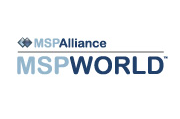Changes for Microsoft Fail-Over and Disaster Recovery Rights
With the April 2014 versions of the Product Use Rights (PUR) (for volume licensees) and the Services Provider Use Rights (SPUR) (for services providers under SPLA), Microsoft has implemented significant changes to several usage rights associated with fail-over or disaster-recovery (DR) installations of its server products.
As many IT professionals know, Microsoft’s fail-over rights always have been less than generous. While the PUR and SPUR have for some time included license grants that permit the use of certain products without requiring separate product licensing, those rights always have been limited in scope or saddled with unreasonable conditions. In at least one respect with the new PUR/SPUR, Microsoft has exacerbated that problem.
Previously, Microsoft allowed its licensees to deploy SQL Server in active/production and passive/fail-over roles under one license (or set of core licenses). Prior PUR versions included language similar to the following among the product-specific license terms for SQL Server:
For any [Operating System Environment (OSE)] in which you use Running Instances of the server
software, you may use up to the same number of passive fail-over Running Instances in a separate
OSE on any Server for temporary support.
The new PUR retains similar usage rights, but it requires licensees to cover their licenses with Software Assurance (SA) in order to take advantage of those rights. This means that licensees deploying SQL Server installations under new licenses or renewing their EA enrollments after April 2014 will be required either to purchase additional SQL Server entitlements for the fail-over servers or to enroll their licenses in SA coverage that they may not need for any other purpose. Worse, the new terms state that even if the SQL Server licenses are covered under SA, the fail-over benefit does not apply in instances where the licensee uses its licenses to support installations on a third-party service provider’s computers under the License Mobility benefit through SA. These changes could lead to significantly increased licensing costs for volume licensees that previously had no interest in paying for SA.
It is not necessarily all bad news, though. A separate benefit with SA (and for all service providers under SPLA) has for some time been a set of relatively limited, “cold” disaster recovery rights for server products. To qualify for that benefit, licensees must ensure that OSEs used for DR purposes are run only (1) for brief periods within one week every 90 days, (2) during a disaster, and (3) during a brief transition period following a disaster. The new PUR and SPUR have improved that benefit somewhat by including Windows Server within the scope of the DR benefit, provided additional requirements are satisfied. This means that, provided they satisfy the various conditions, SA enrollees now are no longer required to purchase separate Windows Server licensing for their DR deployments, which may allow them to reclaim licenses previously used for DR and to re-apply them to other deployments in their environment.
With respect to the PUR, both of these changes are consistent with a general trend we have seen in recent years of Microsoft working steadily to make SA a more attractive service offering for its licensees. Where SA originally was valuable mainly for companies that knew they would need to upgrade to new versions at least once every three years (which, it should be added, historically has been shorter than the version cycle for many Microsoft products), Microsoft increasingly is requiring SA coverage in order to take advantage of usage rights that most companies require in order to run an efficient IT shop.




